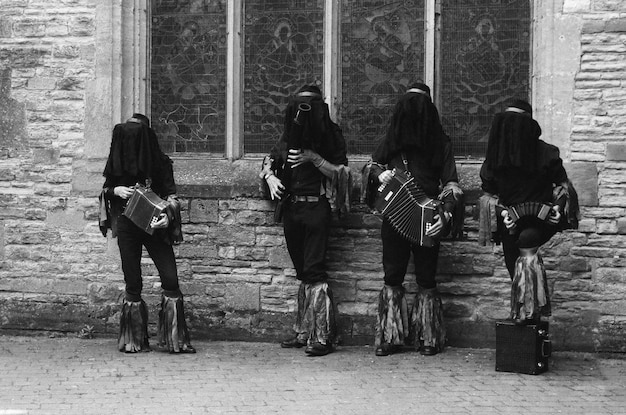Iron Maiden’s Album Legacy: A Deep Dive into Their Best Work

Iron Maiden’s impact on heavy metal is undeniable. This article explores the band’s most iconic albums, analyzing their musical evolution, lyrical themes, and lasting influence on the genre, highlighting why Iron Maiden remains a legendary force.
Iron Maiden’s ferocious energy and intricate compositions have captivated metal fans for decades. Join us as we delve into the band’s discography, celebrating their most influential albums and exploring the legacy they’ve forged in the world of heavy metal.
Iron Maiden’s Formation and Early Years
Iron Maiden’s journey began in the mid-1970s, in the East End of London. Founded by bassist Steve Harris, the band quickly rose through the ranks of the New Wave of British Heavy Metal (NWOBHM) scene, captivating audiences with their raw energy and powerful performances.
The NWOBHM Movement
The New Wave of British Heavy Metal was a response to the decline of early heavy metal and hard rock acts. Bands like Iron Maiden injected new life into the genre with faster tempos, more aggressive sounds, and a DIY ethic.
Early Lineup Changes
Like many bands, Iron Maiden experienced several lineup changes in their early days. These changes helped shape their sound and ultimately led to the formation of the classic lineup that fans know and love.
- Paul Di’Anno: The band’s original vocalist, known for his raw and punk-influenced style.
- Dave Murray: A mainstay guitarist, known for his melodic solos and consistent presence.
- Clive Burr: The band’s early drummer, adding a powerful and dynamic rhythm.

The band’s early years were marked by relentless touring and the release of their self-titled debut album in 1980, which showcased their raw talent and established them as a force to be reckoned with.
Iron Maiden (1980): The Debut Album
Iron Maiden’s self-titled debut album arrived in 1980. It immediately set them apart from their contemporaries in the New Wave of British Heavy Metal movement. The album’s raw energy and powerful songwriting laid the foundation for their future success.
Raw Energy and Punk Influence
The album’s sound is characterized by its raw energy and punk-influenced vocals, courtesy of then-vocalist Paul Di’Anno. This gave the album a distinct edge and aggression that appealed to fans of both metal and punk.
Classic Tracks
Several tracks from the debut album have become staples of Iron Maiden’s live performances. These songs showcase the band’s ability to blend melody with aggression.
- “Prowler”: A high-energy opener that immediately grabs the listener’s attention.
- “Running Free”: A sing-along anthem that captures the spirit of rebellion.
- “Iron Maiden”: The band’s signature song, featuring a galloping rhythm and iconic guitar riffs.
The debut album’s success led to increased exposure and touring opportunities for Iron Maiden, solidifying their position as one of the leading bands in the NWOBHM scene. It remains a testament to their early talent and potential.
Killers (1981): A More Mature Sound
Following the success of their debut, Iron Maiden released “Killers” in 1981. This album showcased a more mature and refined sound, with improved production and songwriting.
Musical Growth
“Killers” demonstrated the band’s growth as musicians and songwriters. The songs were more complex and the arrangements more sophisticated than those on their debut.
Key Tracks
The album features several standout tracks that have become fan favorites. These songs highlight the band’s ability to blend melody with aggression and showcase their instrumental prowess.
- “Wrathchild”: An energetic track with a driving rhythm and memorable guitar riffs.
- “Murders in the Rue Morgue”: A dark and atmospheric song inspired by Edgar Allan Poe.
- “Killers”: The title track, a high-octane anthem with a memorable chorus.

While “Killers” was a step forward musically, it also marked the end of the Paul Di’Anno era. His departure led to the recruitment of Bruce Dickinson, who would become one of the most iconic voices in heavy metal.
The Arrival of Bruce Dickinson: The Number of the Beast (1982)
The arrival of Bruce Dickinson in 1981 marked a turning point for Iron Maiden. His operatic vocals and charismatic stage presence added a new dimension to the band’s sound. The first album to feature Dickinson, “The Number of the Beast” (1982), catapulted them to international stardom.
Dickinson’s Impact
Bruce Dickinson’s arrival brought a new level of vocal power and stage presence to Iron Maiden. His operatic style and charismatic performances quickly won over fans.
Controversy and Success
“The Number of the Beast” generated controversy due to its title and cover art, which some religious groups misinterpreted as promoting Satanism. However, this controversy only fueled the album’s success, helping it reach the top of the charts worldwide.
Key tracks include:
- “The Number of the Beast”: An iconic title track with a memorable riff and dramatic vocals.
- “Run to the Hills”: A high-energy anthem with a catchy chorus and historical lyrics.
- “Hallowed Be Thy Name”: A progressive epic that showcases the band’s musical prowess.
“The Number of the Beast” is widely regarded as one of the greatest heavy metal albums of all time. It established Iron Maiden as a global force and cemented their place in music history.
Powerslave (1984): A Thematic Masterpiece
Iron Maiden continued their ascent to stardom with the release of “Powerslave” in 1984. This album is known for its elaborate Egyptian-themed stage sets and its exploration of historical and mythological themes.
Egyptian Themes and Stage Sets
“Powerslave” is notable for its incorporation of Egyptian themes and imagery. The band’s stage sets during the “World Slavery Tour” were elaborate and visually stunning, adding to the album’s mystique.
Epic Tracks
The album features several epic tracks that showcase the band’s songwriting and instrumental abilities. These songs explore historical and mythological themes with intricate arrangements and powerful lyrics.
Highlights include:
- “Aces High”: A high-octane opener about the Battle of Britain during World War II.
- “2 Minutes to Midnight”: A politically charged anthem about the threat of nuclear war.
- “Rime of the Ancient Mariner”: A 13-minute epic based on Samuel Taylor Coleridge’s poem.
“Powerslave” is considered one of Iron Maiden’s most ambitious and accomplished albums. Its thematic depth and musical complexity have made it a fan favorite and a critical success.
Seventh Son of a Seventh Son (1988): A Concept Album
Iron Maiden embraced the concept album format with the release of “Seventh Son of a Seventh Son” in 1988. The album tells a story based on the novel “Seventh Son” by Orson Scott Card, exploring themes of prophecy, destiny, and supernatural powers.
The Concept Album Format
“Seventh Son of a Seventh Son” is a concept album, meaning that all of the songs are connected by a central theme or storyline. This allowed the band to explore more complex and nuanced ideas in their music.
Keyboard Integration
The album saw Iron Maiden incorporate keyboards more prominently into their sound. This added a new layer of atmosphere and texture to their music, enhancing the album’s overall sonic landscape.
Key Songs:
- “Moonchild”: A powerful opener that sets the stage for the album’s storyline.
- “The Evil That Men Do”: A catchy and memorable track with a sing-along chorus.
- “The Clairvoyant”: A haunting and atmospheric song about prophecy and fate.
“Seventh Son of a Seventh Son” is a testament to Iron Maiden’s creativity and willingness to experiment with their sound. Its intricate storyline and musical arrangements have made it a favorite among fans who appreciate their progressive metal influences.
| Key Point | Brief Description |
|---|---|
| 🤘 Early Years | NWOBHM emergence and debut album. |
| 🎤 Dickinson Era | Bruce Dickinson joins, achieving global fame. |
| 🎸 Thematic Albums | Exploring Egyptian themes and concept albums. |
| 🏆 Legacy | Iron Maiden’s lasting impact on metal music. |
FAQ
▼
The NWOBHM was a movement in the late 1970s and early 1980s that revitalized heavy metal. Bands like Iron Maiden injected new energy and aggression into the genre, influencing countless artists.
▼
Bruce Dickinson’s operatic vocals, charismatic stage presence, and intelligent lyrics elevated Iron Maiden to new heights. His arrival marked a turning point in the band’s career.
▼
The album’s title and cover art sparked controversy, with some religious groups misinterpreting them as promoting Satanism. This controversy only fueled the album’s success and notoriety.
▼
A concept album is a collection of songs connected by a central theme or storyline. “Seventh Son of a Seventh Son” by Iron Maiden is a prime example, exploring themes from Orson Scott Card’s novel.
▼
Iron Maiden’s innovative songwriting, powerful performances, and elaborate stage shows have influenced countless metal bands. They remain one of the most respected and influential bands in the history of heavy metal.
Conclusion
From their humble beginnings in the NWOBHM scene to their status as global metal icons, Iron Maiden’s journey has been nothing short of remarkable. Their iconic albums, featuring powerful vocals, intricate instrumentals, and thought-provoking lyrics, have solidified their place in music history, continuing to inspire and captivate fans worldwide.





